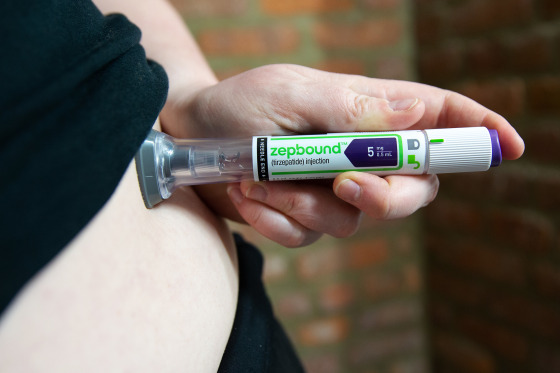Report on Early Smartphone Adoption and its Impact on Youth Mental Well-being
A Global Study Analysis in the Context of Sustainable Development Goals
A comprehensive global study involving over 100,000 young adults across 40 countries has established a significant correlation between the age of first smartphone ownership and the prevalence of severe mental health issues in early adulthood. The findings present a critical challenge to the achievement of several United Nations Sustainable Development Goals (SDGs), particularly SDG 3 (Good Health and Well-being).
Key Findings from the Global Mind Project
Data was sourced from Sapien Labs’ Global Mind Project and analyzed using the Mind Health Quotient (MHQ), a tool measuring 47 dimensions of mental function. The results indicate a consistent, negative trend across diverse cultures and regions.
Core Correlation: Age of Acquisition and Mental Health Decline
- Young adults who received their first smartphone before the age of 13 reported significantly higher rates of suicidal thoughts, aggression, and emotional instability between the ages of 18 and 24.
- The MHQ scale, ranging from -100 (distressed) to +200 (thriving), showed a stark decline in scores corresponding to a younger age of first smartphone ownership.
- This trend suggests that early exposure to smartphones and associated digital environments is developmentally misaligned with the needs of children, directly impacting their long-term mental health and undermining the objectives of SDG 3: Good Health and Well-being.
Gender-Specific Impacts and Social Consequences
- The study identified gender-differentiated outcomes, a key concern for SDG 5: Gender Equality.
- Females who received a smartphone by age six were significantly more likely to report suicidal thoughts (48%) compared to those who received one at age 13 (28%). They also showed marked declines in emotional resilience and self-confidence.
- Males who received a smartphone at a young age demonstrated reduced empathy and emotional stability, with suicidal thoughts rising from 20% (for acquisition at age 13) to 31% (for acquisition at age six).
- These symptoms, including aggression and detachment from reality, pose significant societal consequences as they become more prevalent in younger generations.
Identified Causal Pathways
The analysis identified several interconnected factors that explain the link between early smartphone ownership and poor mental health outcomes.
- Early Social Media Access: This was the most significant factor, accounting for approximately 40% of the negative outcomes. In English-speaking nations, this figure rose to 70%. This pathway directly exposes children to cyberbullying, harmful content, and social comparison, creating environments that contravene SDG 16: Peace, Justice and Strong Institutions, specifically Target 16.2 to end all forms of violence against children.
- Deterioration of Family Relationships: This factor explained 13% of the negative mental health impact.
- Disrupted Sleep: Independent of social media use, general smartphone activity was linked to 12% of the observed mental health issues.
- Cyberbullying: This accounted for 10% of the impact and is a direct violation of a child’s right to safety and protection.
Implications for Sustainable Development Goals (SDGs)
The study’s findings have profound implications for global development targets, highlighting how unregulated technology adoption can reverse progress.
SDG 3: Good Health and Well-being
The report provides clear evidence of a growing mental health crisis among youth, directly challenging Target 3.4, which aims to promote mental health and well-being. The rise in suicidal ideation, anxiety, and emotional distress represents a public health issue that requires urgent preventative action.
SDG 16: Peace, Justice and Strong Institutions
Case studies from the U.S. (Mallory Grossman) and the U.K. (Molly Russell) illustrate the fatal consequences of cyberbullying and exposure to harmful online content. These incidents underscore the failure of existing institutional frameworks to protect children online, making the call for stronger regulation and platform accountability essential to achieving Target 16.2.
SDG 4: Quality Education
The documented decline in cognitive and social faculties interferes with a child’s ability to learn and thrive in an educational setting. This undermines the goal of providing quality education (Target 4.7), which includes fostering social and emotional skills.
A Call for Action: Policy Recommendations
The report advocates for a society-wide, developmentally appropriate policy response to mitigate these harms and align digital technology with child well-being and the SDGs. The burden should not be placed solely on parents.
- Mandatory Digital Literacy: Implement comprehensive education on digital citizenship and mental health before children gain access to social media, analogous to driver’s education. This supports SDG 4.
- Strict Age Verification: Enforce age restrictions on social media platforms with significant penalties for non-compliant technology companies, reinforcing institutional responsibility as per SDG 16.
- Graduated Technology Access: Promote the use of “kids’ phones” that provide basic communication without access to algorithm-driven platforms and the internet.
- Public Health-Based Regulation: Develop public policy modeled after tobacco and alcohol regulations, limiting access based on scientifically established age-related vulnerabilities to protect youth well-being, in line with SDG 3.
The scale and consistency of the evidence justify immediate, precautionary action. Waiting for irrefutable proof of causation risks missing the critical window for intervention, potentially causing irreversible harm to the mental health of an entire generation.
Analysis of SDGs, Targets, and Indicators
1. Which SDGs are addressed or connected to the issues highlighted in the article?
- SDG 3: Good Health and Well-being: The core of the article focuses on the negative impact of early smartphone use on the mental health and well-being of children and young adults.
- SDG 16: Peace, Justice and Strong Institutions: The article discusses issues of online violence (cyberbullying), the need for child protection, and the role of legislation and corporate accountability in creating safer online environments.
- SDG 4: Quality Education: The article proposes educational measures as a key part of the solution to mitigate the harms of early technology access.
2. What specific targets under those SDGs can be identified based on the article’s content?
-
SDG 3: Good Health and Well-being
- Target 3.4: By 2030, reduce by one third premature mortality from non-communicable diseases through prevention and treatment and promote mental health and well-being.
Explanation: The article is centered on the decline of mental health and well-being in youth due to early smartphone ownership. It explicitly links this to “suicidal thoughts” and details cases of suicide (premature mortality) like those of Mallory Grossman and Molly Russell, which were directly connected to online activities. The study’s goal is to prevent these outcomes and promote mental health.
- Target 3.4: By 2030, reduce by one third premature mortality from non-communicable diseases through prevention and treatment and promote mental health and well-being.
-
SDG 16: Peace, Justice and Strong Institutions
- Target 16.1: Significantly reduce all forms of violence and related death rates everywhere.
Explanation: The article identifies cyberbullying as a significant form of psychological violence. It states that in Australia, “12- to 13-year-olds now account for 35% of all cyberbullying reports,” and that these cases can involve “threats encouraging self-harm or suicide,” directly linking this violence to related death rates. - Target 16.2: End abuse, exploitation, trafficking and all forms of violence against and torture of children.
Explanation: The article highlights how children are exposed to harm online. The case of Molly Russell, who “viewed more than 2,000 pieces of content related to self-harm, suicide, and depression,” is a clear example of a child being exposed to psychological abuse and violence through digital platforms. The article argues that children are “particularly susceptible to their damaging effects” when their sense of self is still forming. - Target 16.6: Develop effective, accountable and transparent institutions at all levels.
Explanation: The article calls for a “society-wide policy response,” including “strict enforcement of age restrictions” and “meaningful penalties for tech companies that fail to comply.” This points to the need for more effective and accountable institutions (both governmental and corporate). The mention of the U.K.’s “Online Safety Act” is a direct example of developing such institutional frameworks.
- Target 16.1: Significantly reduce all forms of violence and related death rates everywhere.
-
SDG 4: Quality Education
- Target 4.7: By 2030, ensure that all learners acquire the knowledge and skills needed to promote sustainable development, including… promotion of a culture of peace and non-violence…
Explanation: A key recommendation from the researchers is “Mandatory digital literacy and mental health education before children gain access to social media.” This directly aligns with Target 4.7 by aiming to provide learners with the knowledge and skills to navigate the digital world safely and promote their own well-being (a sustainable lifestyle). - Target 4.a: Build and upgrade education facilities that are child, disability and gender sensitive and provide safe, non-violent, inclusive and effective learning environments for all.
Explanation: The article notes that children are vulnerable to “classroom disruptions, arising from broader smartphone use.” This implies that unregulated smartphone use undermines the creation of a safe and effective learning environment, which is the focus of this target.
- Target 4.7: By 2030, ensure that all learners acquire the knowledge and skills needed to promote sustainable development, including… promotion of a culture of peace and non-violence…
3. Are there any indicators mentioned or implied in the article that can be used to measure progress towards the identified targets?
-
For Target 3.4 (Promote mental health and well-being):
- Suicide rate among young adults (18-24): The article explicitly links early smartphone use to suicide cases and suicidal thoughts, making this a primary indicator.
- Prevalence of mental distress: The article uses the “Mind Health Quotient (MHQ)” as a comprehensive tool to measure mental well-being. The percentage of young people with scores below 0 (“significant mental distress”) is a direct indicator.
- Percentage of youth reporting suicidal thoughts, aggression, or detachment from reality: The study quantifies these symptoms. For example, it states “48% of females who had a smartphone by age five or six reported having suicidal thoughts.” Tracking these percentages would measure progress.
-
For Targets 16.1 & 16.2 (Reduce violence and abuse against children):
- Incidence of cyberbullying: The article mentions that in Australia, “12- to 13-year-olds now account for 35% of all cyberbullying reports.” This percentage serves as a clear indicator of online violence against children.
- Percentage of youth exposed to harmful online content: The case of Molly Russell, who viewed thousands of pieces of self-harm content, implies that tracking exposure to such material is a key metric for child safety.
-
For Target 16.6 (Develop effective institutions):
- Number of countries with legislation regulating online platforms for child safety: The article cites the “U.K.’s Online Safety Act” as a model, implying that the adoption of similar laws would be an indicator of progress.
- Compliance rate of tech companies with age verification rules: The article notes that age minimums are “easily bypassed.” An indicator would be the rate at which platforms successfully enforce these restrictions.
-
For Target 4.7 (Education for sustainable lifestyles):
- Percentage of school curricula that include mandatory digital literacy and mental health education: The article recommends this as a policy solution. Its implementation rate would be a direct indicator of progress.
4. Summary Table of SDGs, Targets, and Indicators
| SDGs | Targets | Indicators Identified in the Article |
|---|---|---|
| SDG 3: Good Health and Well-being | 3.4: Reduce premature mortality… and promote mental health and well-being. |
|
| SDG 16: Peace, Justice and Strong Institutions | 16.1: Significantly reduce all forms of violence and related death rates. |
|
| 16.2: End abuse… and all forms of violence against… children. |
|
|
| 16.6: Develop effective, accountable and transparent institutions. |
|
|
| SDG 4: Quality Education | 4.7: Ensure all learners acquire knowledge and skills for sustainable lifestyles… and non-violence. |
|
| 4.a: Provide safe, non-violent… and effective learning environments. |
|
Source: zmescience.com







